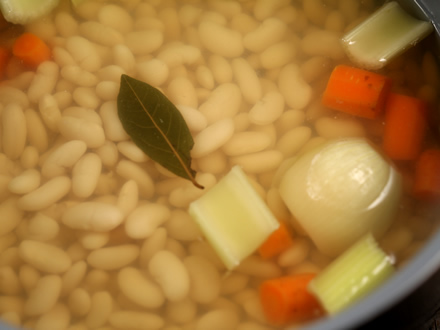HOW TO BOIL DRIED BEANS PERFECTLY ON A STOVE
Boiling dried beans in a regular pot on the stove can be tricky due to many variables. This guide covers everything you need to know for a successful, tender, and flavorful result every time.
🕒 Soaking Time: 8-15 hours
🍳 Boiling Time: 45 minutes to 3 hours (depending on bean age & type)
🍽️ Servings: Variable depending on amount
Ingredients
- Dried beans
- Fresh herbs and vegetables (optional, for flavor)
- Water
- Salt
Important Notes on Beans and Preparation
- Cooking time varies widely — from 45 minutes to 3 hours — depending on bean size, variety, water quality, and especially bean age. Beans older than 2 years take much longer to cook and may not soften evenly.
- Buy beans from a trusted source (local market or rural supplier) where you can inquire about bean age and cooking time. Avoid mixed-age bean bags to prevent uneven cooking.
- Always note the cooking time after the first successful batch for future reference.
Step-by-Step Instructions
- Soak the Beans
Place dried beans in a large bowl and cover with plenty of lukewarm water. Soak overnight for at least 8 hours (up to 15 hours). If soaking longer than 10 hours, refrigerate to prevent fermentation.
After soaking, discard floating beans (these are usually bad), drain, and rinse the beans well under cold water. Soaking reduces cooking time and gas production. - Check Bean Firmness
Squeeze a bean between your fingers — softer beans will cook faster, while harder beans need more time. - Start Boiling
Transfer beans to a pot and cover with water 4-5 cm above the beans. Bring to a boil over medium heat.
Optional: Add 1/4 teaspoon baking soda per 500g of dried beans to soften the skin and reduce cooking time, especially if making purees. Avoid overuse as baking soda destroys some vitamins. - Simmer Gently
Once boiling, reduce heat to low so water simmers gently (tiny bubbles, not rolling boil). Partially cover the pot with a lid. Boiling too hard can break beans or crack skins.
Stir occasionally (every 15-20 minutes) to ensure even cooking. Stop stirring when beans begin to soften to avoid mashing them. - Check for Doneness and Seasoning
Start tasting beans after 30 minutes. When they are nearly tender but still slightly firm, add salt gradually to taste. Add other aromatics like carrot, celery, onion, garlic, bay leaf, thyme, or parsley at this point.
Remove and discard any shriveled beans floating on top. - Maintain Water Level
If water level drops significantly, add boiling water to maintain coverage — never add cold water to avoid breaking beans. - Final Cooking Stage
- For soups or salads: cook beans fully tender but intact.
- For stews or thick bean dishes: cook until just tender with a slight bite, as beans will cook further in the sauce.
- Cooling and Storage
Turn off heat and allow beans to cool slightly in cooking liquid before draining to avoid skin damage.
If not using immediately, store beans in their cooking water in the refrigerator for up to 4 days. Beans taste better and sauces thicken naturally when beans are cooked a day in advance.
💡 Tips
- Use a heavy-bottomed pot or slow cooker for consistent heat distribution.
- Avoid boiling beans vigorously to prevent skin damage.
- Always soak beans to reduce cooking time and improve digestibility.
- Record cooking times for different bean batches for better consistency.
🎉 Ideal For
- Traditional bean soups and stews
- Bean salads and dips
- Healthy plant-based meals
📝 Final Thoughts
With proper soaking, gentle simmering, and attention to detail, boiling dried beans at home can be simple and rewarding. This method ensures perfectly tender beans that maintain their shape and flavor, elevating any dish you prepare.

